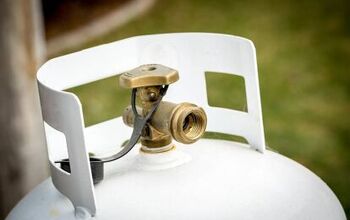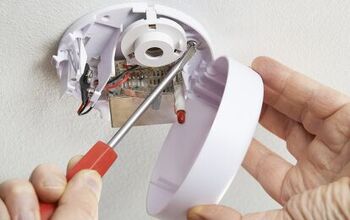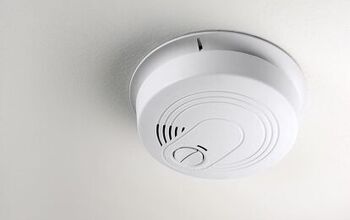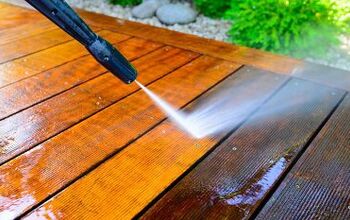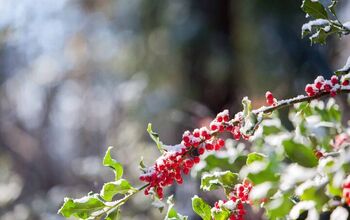What Are Spotted Lanternflies, And How To Get Rid Of Them

In the last few years, Americans throughout the Northeast have noticed an influx of a new invasive insect — the spotted lanternfly. These bugs have not only moved into this region, but they have started taking over. In the summer, they can cover entire trees and the sides of buildings. They leave damage, mess, and destruction wherever they land. If you see spotted lanternflies in your yard, you’ll want to do all you can to get rid of them immediately.
Spotted lanternflies have no natural predators in North America, so it is up to humans to keep their populations in check. You can kill these pests with a mixture of dish soap and water, glue and fly traps on trees, or even with a vacuum or DIY insect traps. Remove their host plant, specifically the tree of heaven. Know how to spot their eggs and remove them.
For an insect that can’t fly very well, this bug is spreading to new areas faster than anyone would like. If you live anywhere in North America, you and your plants are at risk. To protect your property from these pests, you need to know what these insects are and the best ways to get rid of them.
What Are Spotted Lanternflies, Exactly?
Spotted lanternflies are native to northern China and other parts of Asia. They are thought to have arrived in the United States in 2014 and have been quickly increasing in population each year. They first spread throughout the state, and are now found in New Jersey, New York, New England, and Northern Virginia.
These bugs have five stages of life, and when they are adults, have distinct spots with red under wings. When their wings are fluttering, they almost look like a type of moth, but they are planthoppers, not moths. They are in their largest phase in August, which is when infected regions can seem completely overrun by them. Sometimes, entire trees are covered in these adult sap-sucking pests.
In addition to sucking out the plant's nutrients, they give off an excrement called “honeydew.” This gross wet residue collects on leaves and the ground below, and attracts insects like yellow jackets. It can also inspire mold to grow, which can also damage and kill your plants.
Reasons Why Spotted Lanternflies Are A Menace To Your Yard
1. They Destroy Plants Quickly
These animals are dangerous because they can destroy trees, including hardwood and fruit trees, very quickly. Their destruction is said to cost upwards of $50 million in lost revenue per year in Pennsylvania alone.
2. They Can Multiply Fast
One adult female spotted lanternfly can lay as many as 50 eggs at a time. They have gone from a tiny population to infest entire regions in less than 10 years. This rapid reproduction makes efforts to lower their populations very important.
3. Their Presence Can Attract More Bugs And Mold
Not only do the bugs destroy plants, but the excrement they leave behind causes more problems. The honeydew they leave causes sooty mold to grow on and around plants. This can kill a plant. This excrement also attracts yellowjackets and other stinging insects you don’t want in your yard.
4. The Bugs Have No Predators
Spotted lanternflies, unlike most insects, have no predators. This means that if humans don’t intervene, their populations can skyrocket rapidly. Humans are the only reliable line of defence against these pests.
Nine Ways To Get Rid Of Spotted Lanternflies
1. Spray Them With Dish Soap And Water
One DIY concoction that can help kill spotted lanternflies is a mixture of dish soap and water. You can add this mixture to a spray bottle and spray these insects with it. This mixture cuts off their air supply and will eventually kill them.
This mixture is also an effective way to kill cockroaches. Just make sure you don’t spray too much of it on vulnerable plants like small garden plants, as it can be toxic for them as well.
2. Know How To Spot Their Eggs
Spotted lanternfly eggs are laid in late summer and then survive the entire winter before hatching in the spring. Knowing how to spot their eggs and destroy them will help reduce populations in the future.
Spotted lanternflies like to lay eggs on flat surfaces, like tree trunks, and even on the sides of buildings and on car tires. If you see strange, muddy, and sappy patches that appeared out of nowhere, then look closer.
You can scrape these eggs off surfaces easily and then dispose of them. Knowing what the eggs look like can also help prevent you from unknowingly bringing these pests to your property.
3. Use Insect Killer Sprays
Even though these insects are still new to North America, there are some effective spotted lanternfly sprays you can buy. It’s important to know that many normal bug sprays aren’t particularly effective against these bugs.
Therefore, ensure you only use sprays that are specifically made to target these pests. These sprays are toxic, so be careful when spraying these substances on plants.
Do not use a general pesticide. These aren’t very effective against these plants and will likely do more harm than good to your yard’s ecosystem.
4. Plant More Milkweed
Milkweed is a flowering perennial that is known to attract butterflies and other pollinators. It is also a plant that spotted lanternflies are drawn towards. What’s great about milkweed is that it attracts these pests, but it is also toxic to them.
As spotted lanternflies feed on milkweed, they will consume this toxin, and eventually it will kill them. If you are wondering what flower you should plant in your pollinator garden, then consider milkweed.
5. Use A Vacuum To Suck Them Up
If you have a tree that is infested with hundreds of spotted lanternflies, which happens, then a spray is no match for the sheer quantity of bugs. Instead, grab an extension cord and your most powerful vacuum, like a Shop-Vac.
These flies can’t fly and don’t move quickly, so it is very easy to vacuum them up off surfaces like trees and buildings. Once you have sucked them all up, you can dispose of them however you wish.
6. Install Glue Traps And Use Sticky Paper And Mesh
One of the most effective ways to get rid of spotted lanternflies throughout the summer is to install sticky paper on trees that these bugs like. Wrap the trunk and branches in this paper. Since these bugs don’t fly, they will crawl onto the paper and become stuck.
Remember this paper is very sticky, and it can also hurt wildlife like birds. To prevent this from happening, you should install a screen or mesh over the sticky paper. This will allow the bugs to get stuck, but will keep animals safe.
7. Get Rid Of Host Plants That Attract Them
Spotted lanternflies have a few trees that they gravitate towards. The tree of heaven, an invasive tree found in all 50 states, is the main plant they gravitate towards. Some scientists think they might even need this tree to survive.
If you have a tree of heaven, get rid of it, as well as any offshoots of this tree. They also love grape vines and walnut trees. So if you have any small grapevine shoots or walnut trees, either protect them fiercely or get rid of them.
8. Make A DIY Spotted Lanternfly Trap
You can also make a DIY bug trap, similar to a fly or other bug traps. Use a large container with one entrance, and allow the bugs to fall in. Put a little soapy water inside to ensure they can’t escape. Place these traps on and around trees where you’ve seen these flies.
9. Contact Your Local Department Of Agriculture
Lastly, remember to contact your local department of agriculture and any other relevant departments if you spot these insects in a new area. Tracking them is a crucial step in helping contain their spread. They may also be able to provide you with advice and tools to help combat these bugs.
Concluding Notes On How To Get Rid Of Spotted Lanternflies
Spotted lanternflies are an invasive insect species that have started to cause catastrophic damage in Pennsylvania and neighboring states. To ensure your property isn’t overrun by them, you must do all you can to get rid of them.
Some effective methods of getting rid of them include using sticky tape and glue traps on vulnerable trees, and using a mixture of dish soap and water to spray them. Some bug killers work, but avoid using general pesticides. You can make DIY traps to collect them in containers or even use a vacuum to suck them off trees.
Related Guides:
- 11 Pests That Can Ruin A Spring Garden (And How To Stop Them)
- What Bugs Are Good For Your Garden?
- What Keeps Eating My Bougainvillea?

Tom Gaffey is an expert writer who currently resides in Washington D.C. Tom has a passion for real estate and home improvement writing, as well as travel and lifestyle writing. He lived the last twelve years in Hawaii where he worked closely with luxury resorts and event planners, mastering his knowledge of aesthetics and luxury products. This is where he found his passion for home improvement and a keen interest in DIY projects. Currently, Tom resides in Washington D.C, and also working on his debut fiction novel.
More by Tom Gaffey
















